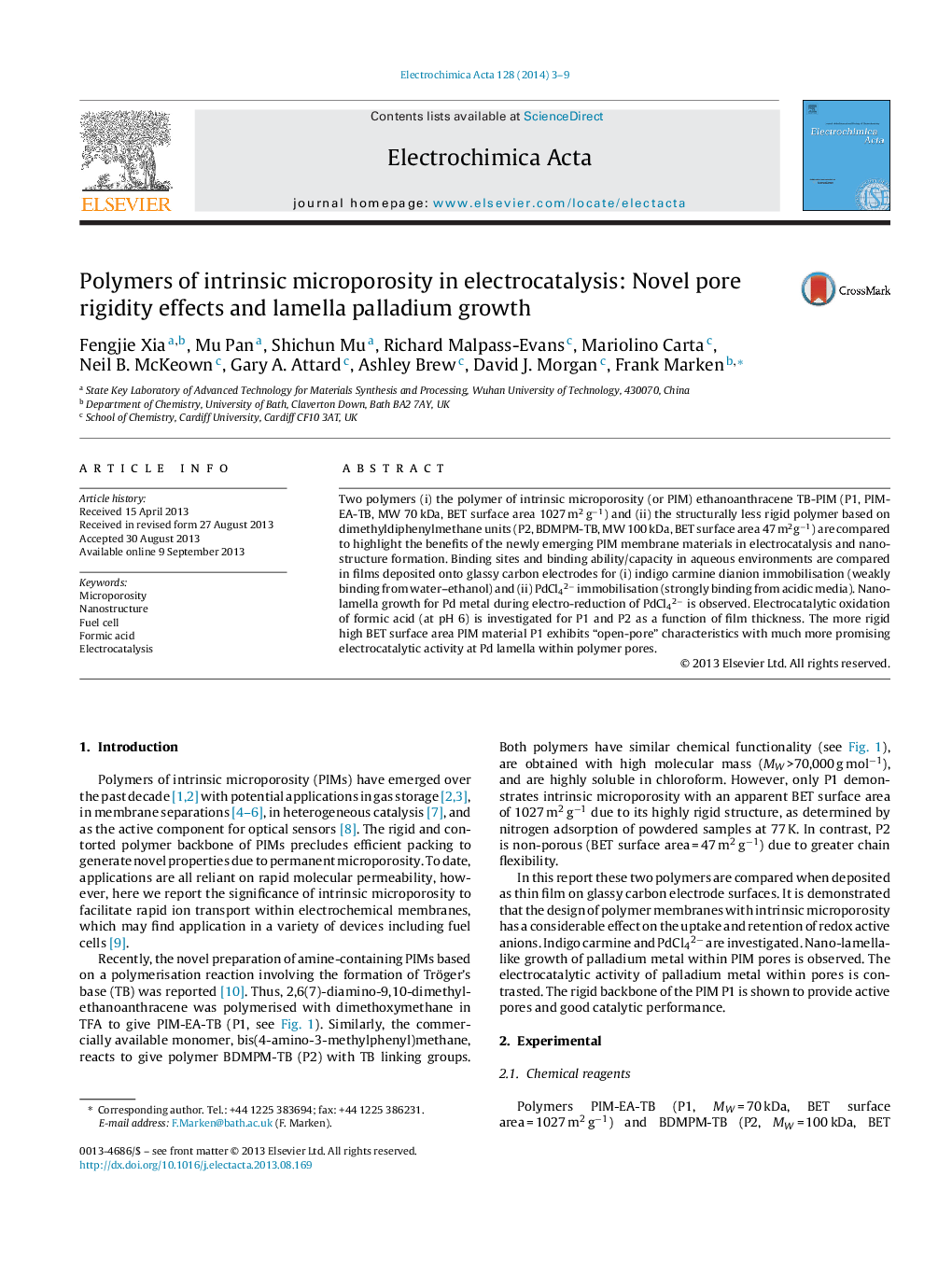| Article ID | Journal | Published Year | Pages | File Type |
|---|---|---|---|---|
| 186066 | Electrochimica Acta | 2014 | 7 Pages |
•Intrinsically microporous polymers are introduced as electrode modifier.•Binding of indigo carmine and PdCl4− are demonstrated.•Formation of Pd metal and catalysis are demonstrated.
Two polymers (i) the polymer of intrinsic microporosity (or PIM) ethanoanthracene TB-PIM (P1, PIM-EA-TB, MW 70 kDa, BET surface area 1027 m2 g−1) and (ii) the structurally less rigid polymer based on dimethyldiphenylmethane units (P2, BDMPM-TB, MW 100 kDa, BET surface area 47 m2g−1) are compared to highlight the benefits of the newly emerging PIM membrane materials in electrocatalysis and nanostructure formation. Binding sites and binding ability/capacity in aqueous environments are compared in films deposited onto glassy carbon electrodes for (i) indigo carmine dianion immobilisation (weakly binding from water–ethanol) and (ii) PdCl42− immobilisation (strongly binding from acidic media). Nano-lamella growth for Pd metal during electro-reduction of PdCl42− is observed. Electrocatalytic oxidation of formic acid (at pH 6) is investigated for P1 and P2 as a function of film thickness. The more rigid high BET surface area PIM material P1 exhibits “open-pore” characteristics with much more promising electrocatalytic activity at Pd lamella within polymer pores.
Graphical abstractFigure optionsDownload full-size imageDownload as PowerPoint slide
